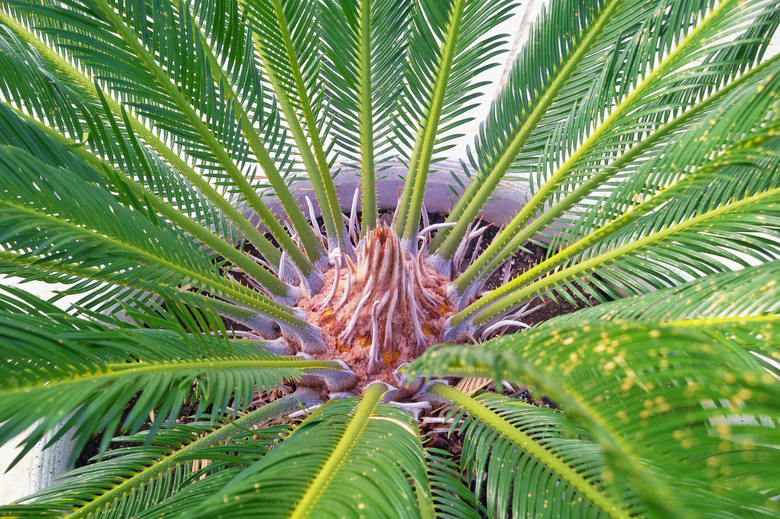How To Dig Up A Sago Palm
We may receive a commission on purchases made from links.
Unless you're dealing with a small plant (less than 4-inch-diameter trunks), digging up a sago palm (Cycas revoluta, USDA plant hardiness zones 9 to 12) can be a backbreaking task. The large trunk and root system of larger specimens are extremely heavy and may require a team of people for a move out of the hole and to a new planting site. Digging up a larger sago is possible, but it might be easier to hire a landscaping crew to do the work for you.
Digging Tips for Sago Palms
Digging Tips for Sago Palms
Sago palms grow very slowly, and it can take up to 50 years for them to reach a height of 10 feet. If you decide you need to transplant to another site, or you just want to get rid of one, you won't have to worry about it growing leaps and bounds before you have a chance to get the job done.
Like other palms, the sago palm's root system doesn't have a tendency to spread horizontally through the planting site, but grows vertically deep into the ground. Also like other palms, the sago palm forms a large root ball that becomes extremely heavy as it ages. The older the sago palm, the deeper the root system and the more work it takes to dig it out. If you're transplanting to a new site, it's best to have the new planting hole prepared so the sago can be immediately planted.
Things Needed
-
or spade shovel
-
Loppers or pruning shears
-
Wheelbarrow or tarp
How to Dig Up a Sago Palm
1. Prepare the New Planting Hole
Prepare a new planting hole that has well-draining soil in sun to partial shade. Dig a hole that is just as deep and twice as wide as the expected root ball. You can make the hole bigger once you see the size of the root ball.
2. Prepare the Sago for Transplanting
Wear gloves because the pointed and sharp tips of the sago branches can cut your skin. To safely get close to the trunk, trim off all the sago branches other than the top ring.
3. Dig Out the Sago Palm
Use sharpshooter shovel or a spade shovel to start digging out the sago about 6 to 12 inches from the plant's trunk, being sure to retrieve as much of the root system as possible. Depending on the sago's size, you will have to dig at least 1 foot into the soil to get the entire root system.
4. Prune Roots If Needed
Prune any stubborn roots to release them from the soil, if needed. You'll have better luck transplanting the sago if you trim the roots to a length of about 1 foot. Use clean loppers or pruning shears to make the cuts.
5. Remove the Sago Palm
Lift the root system out of the planting hole using the shovel. Place the sago on a wheelbarrow or tarp and move it to the new planting site.
6. Plant the Sago Palm
Center the sago in its new planting hole, taking care not to plant it any deeper than it was originally growing. Add additional soil to the bottom of the hole if needed.
7. Irrigate the Sago Palm
Water the sago, making sure to saturate the root system. Continue watering the sago when the soil becomes dry. You should start to see new normal growth resume a year or two after transplanting.
